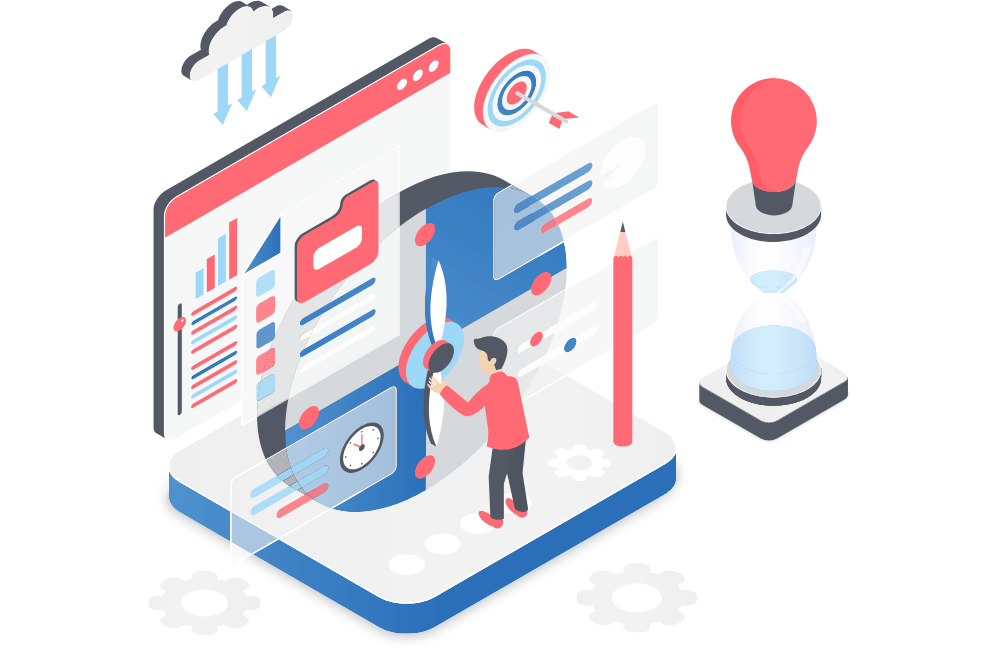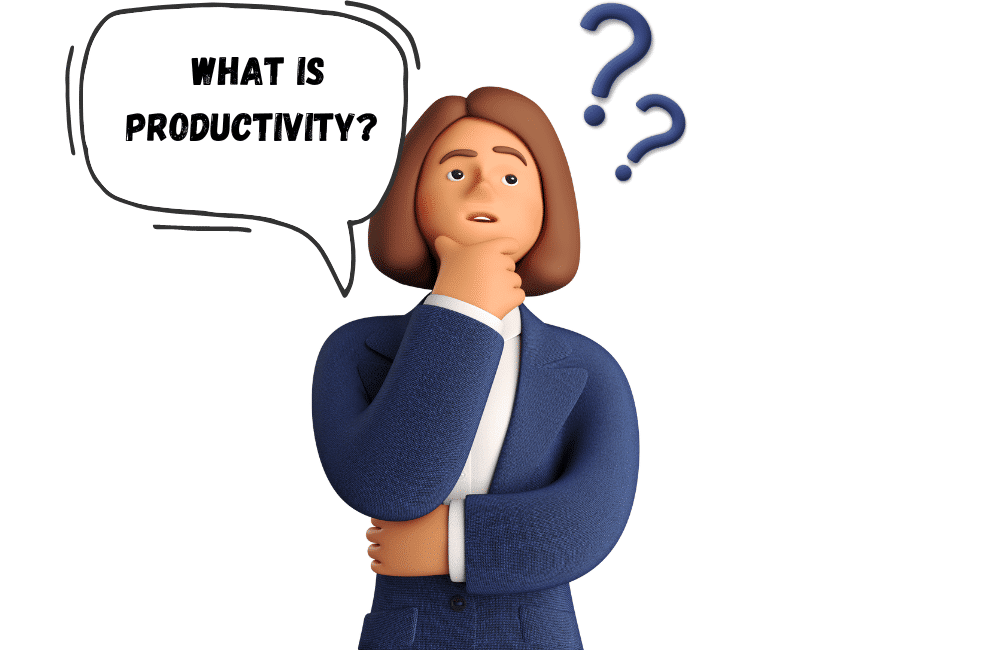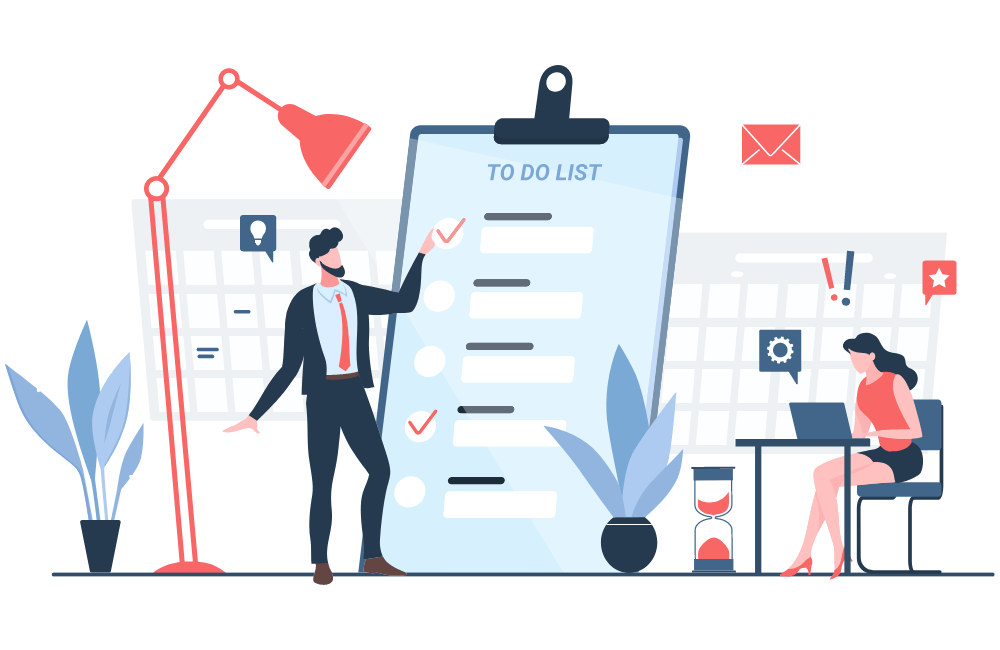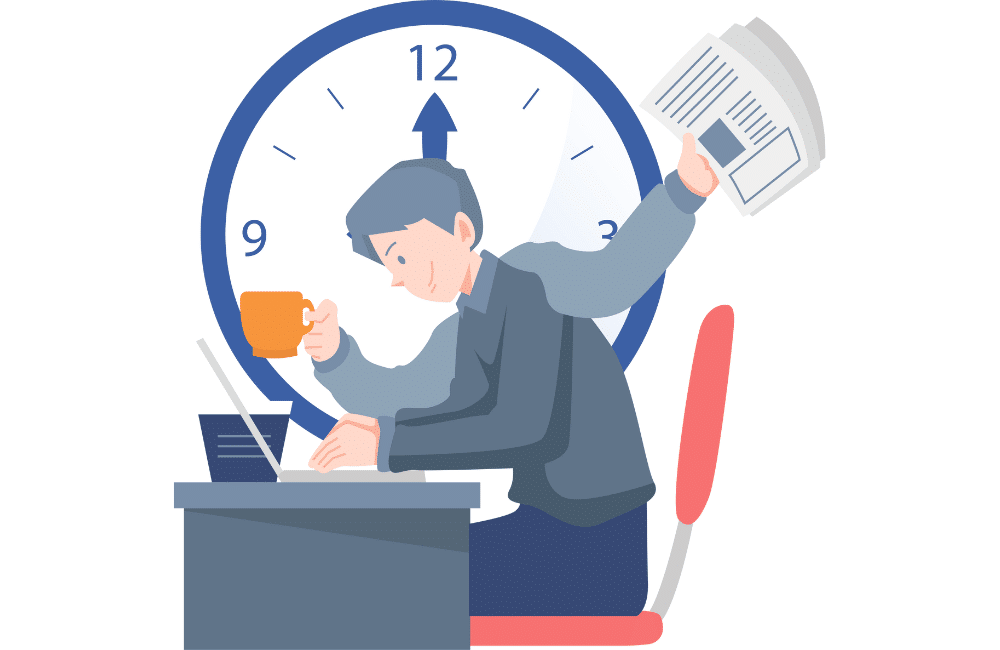Every person wishes to maximize productivity, be they an entrepreneur, student, or homemaker. It is a key component in the pursuit of success. However, finding effective ways to increase productivity often seems like a daunting task. With this comprehensive guide, you will learn how to become more productive and sustain that productivity over time.

Understanding Productivity: A Deep Dive
Before we begin exploring various strategies that can help ramp up productivity, it’s paramount to get a firm grasp of what productivity really means. Many mistake productivity for simply getting a large volume of work done. However, productivity encompasses far more than just the quantity of work. It is, in essence, a measure of the efficiency of production.
What is Productivity?
Productivity, in its purest form, is about accomplishing more in less time and with fewer resources. It is the ratio of outputs to inputs in any task or series of tasks. In the context of personal productivity, the output is the amount of work you complete or the tasks you accomplish, while the inputs are the time, effort, and resources you invest.

A high level of productivity means achieving a high output with a relatively low input – you’re getting more done in less time and doing so efficiently. For instance, you’ve effectively doubled your productivity if you can accomplish a task that usually takes two hours in just one hour without compromising on quality.
Productivity Isn’t About Working Longer; It’s About Working Smarter
A common misconception is that productivity requires working like a horse from sunrise to sunset. This dangerous misconception can lead to burnout and ultimately reduce productivity. True productivity is not about working longer hours or putting in more effort than everyone else. It’s about optimizing your work to get more done quickly.

For example, if you spend eight hours writing a report because you’re simultaneously checking your emails, scrolling through social media, and watching the news, you’re not being as productive as you could be. If you focused solely on the report, you might complete it in three hours, giving you five extra hours to accomplish other tasks or to relax and rejuvenate.
Key Components of Productivity
- Efficiency is the ability to accomplish a job with minimum time and effort. The more streamlined and effective your workflow, the more efficient you are.
- Effectiveness: This relates to the quality of output. It’s not enough to complete tasks quickly; the output must also meet a certain standard of quality. High productivity means balancing speed with quality.
- Consistency: Productivity isn’t a one-time event. True productivity involves consistently maintaining high levels of efficiency and effectiveness over time.
Understanding productivity means recognizing it as a measure of how smartly you can work rather than how hard you can. With this understanding, you’re better equipped to implement strategies and tools that help you increase productivity sustainably and effectively. The aim is to maximize your output and maintain high quality while minimizing the input of time, energy, and resources.
Strategies to Increase a Productivity
1. Prioritize Your Tasks
The path to productivity starts with setting your priorities straight. Understand that not all tasks hold the same level of importance or urgency. The key is to discern the tasks that align with your primary goals and objectives.

A useful technique for task prioritization is the Eisenhower Box or Eisenhower Matrix. This time management strategy, conceived by former US president Dwight D. Eisenhower, divides tasks into four categories based on urgency and importance: urgent and important, important but not urgent, urgent but not important, and not urgent or important. By categorizing tasks this way, you can effectively manage your to-do list and ensure that the most critical tasks get your attention first.
2. Time Management is Crucial
Productivity is, in essence, the art of managing your time efficiently. To increase productivity, it is necessary to have control over how your time is spent. One way to achieve this is by using the Pomodoro Technique. This time management tool encourages you to work for a set time (usually 25 minutes), followed by a short break (usually 5 minutes). This practice allows you to maintain focus and energy levels while preventing burnout. It acknowledges that the brain needs regular, short breaks to perform optimally.

3. Limit Distractions
In this digital age, distractions are rampant and easily accessible. Maintaining productivity requires the discipline to limit these interruptions. This can involve setting up a dedicated workspace free from distractions, turning off social media and email notifications during work hours, or using apps that block distracting websites. Learning to manage distractions helps maintain a high level of focus, leading to increased productivity.

4. Set Realistic Goals
Productivity can take a nosedive when we set goals that are too ambitious or unrealistic. It’s crucial to set goals that are challenging yet achievable. These goals should stretch your capabilities but not to the point of overwhelm. Remember, productivity isn’t about attaining perfection; it’s about making steady progress toward your goals.
5. Maintain a Healthy Lifestyle
Physical health and mental well-being are the bedrock of productivity. Regular exercise releases endorphins (the feel-good hormones), boost energy levels and enhances focus and concentration. A balanced diet fuels the body with the necessary nutrients to function effectively. Sufficient sleep ensures the body and mind are well-rested and ready for the day’s challenges. Prioritizing these lifestyle factors can significantly impact your productivity.
6. Utilize Productivity Tools
In the era of technology, many productivity apps and tools exist to aid in task management, time management, and focus. Tools like Trello can help you manage tasks and projects, Calendly can assist in scheduling meetings without the back-and-forth emails, and apps like Forest can encourage you to stay focused by gamifying the process of avoiding distractions. Harnessing the power of these tools can greatly enhance your productivity journey.
7. Continuous Learning and Improvement
Finally, to foster productivity, adopt a growth mindset. Continuous learning and striving for improvement are crucial components of this mindset. Invest time in learning new skills, acquiring knowledge, and continually assessing and refining your productivity strategies. As you learn and adapt, your productivity levels are bound to rise. A commitment to constant learning and improvement can lead to consistent increases in productivity, paving the way for personal and professional growth.
8. Use the “2-Minute Rule”
The 2-minute rule, popularized by productivity consultant David Allen, states that if a task takes less than two minutes to complete, do it immediately rather than putting it off for later. This approach prevents small tasks from piling up and consuming a significant chunk of your time.
9. Delegate When Possible
No one can do everything themselves. Recognize tasks that others can do and delegate them. This will free up your time to focus on tasks that require your unique skills and expertise, boosting your overall productivity.
10. Master the Art of Saying “No”
Time is a limited resource. Sometimes, increasing productivity means turning down requests or tasks that don’t align with your goals or could overwhelm your schedule.
11. Create a Morning Routine
A solid morning routine can set a positive tone for the rest of the day. Whether it involves exercise, meditation, or planning your day, a morning routine can help you start the day on a productive note.
12. Practice Mindfulness
Being fully present and engaged in the current task can significantly enhance productivity. Mindfulness helps eliminate distractions and lets you fully focus on the task.
13. Use the 80/20 Rule
Also known as the Pareto Principle, it suggests that 80% of results come from 20% of efforts. Identify and focus on those high-yield tasks to maximize productivity.
14. Break Down Large Tasks
Large tasks can seem daunting. Breaking them into smaller, manageable tasks can make them feel more approachable, reducing procrastination and increasing productivity.
15. Maintain a Clutter-Free Workspace
A clutter-free and organized workspace can reduce distractions and help you focus better. It can also save time spent searching for documents or tools.
16. Keep a Work Journal
Keeping a work journal can help you track your tasks, ideas, and achievements. It can provide insights into your work patterns and help identify areas for improvement.
17. Leverage Technology
Beyond productivity apps, leverage technology like cloud services for file storage and sharing, virtual assistants for reminders, or project management software for team tasks.
18. Regularly Review and Update Your Techniques
Productivity strategies are not one-size-fits-all. Regularly review and update your techniques to find what works best for you in your current situation.
19. Schedule Downtime
Rest is essential for high productivity. Make sure to schedule downtime for relaxation and rejuvenation. It can prevent burnout and keep you energized for productive work.
20. Embrace Mono-tasking
While multitasking might seem productive, research shows it can lead to errors and reduce productivity. Embrace mono-tasking – focusing on one task at a time and doing it well.
Final Thoughts
Increasing productivity is not about working harder but working smarter. You can significantly boost your productivity by prioritizing tasks, managing time effectively, limiting distractions, setting realistic goals, maintaining a healthy lifestyle, utilizing productivity tools, and committing to continuous learning and improvement.
Remember, the journey to enhanced productivity is a marathon, not a sprint. Consistency is key; with these strategies, you are well on your way to becoming a productivity powerhouse.

